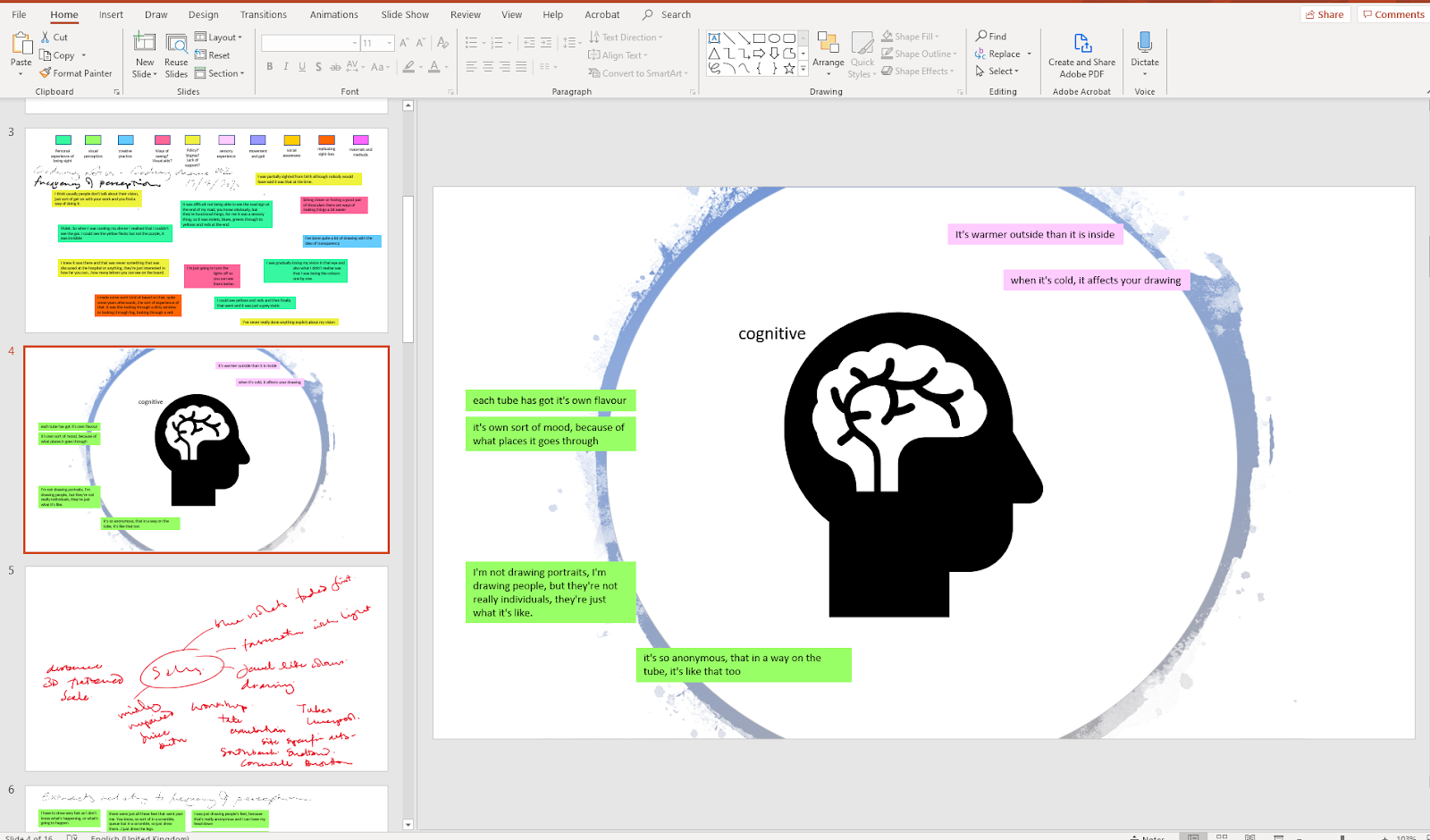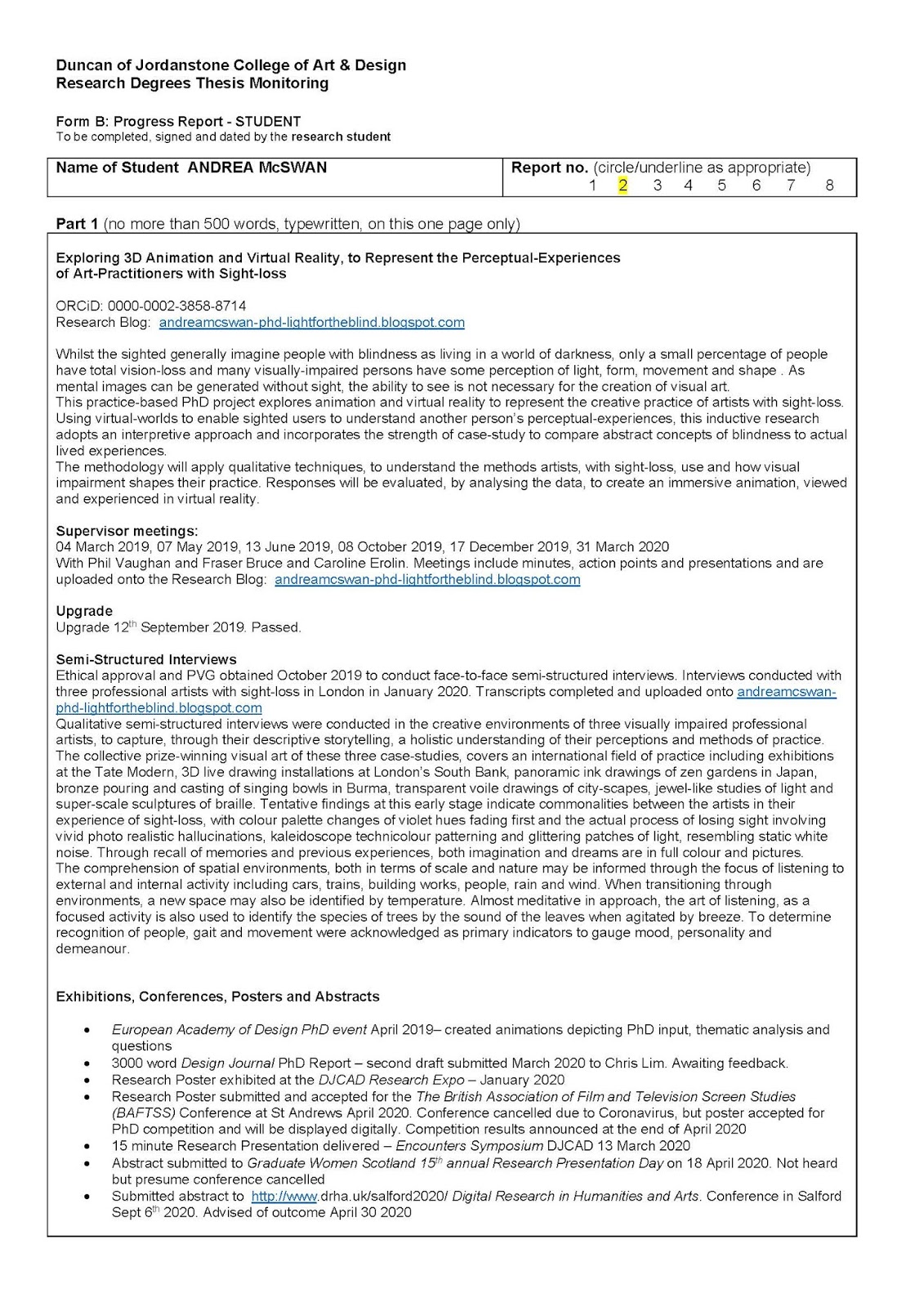Data Analysis_ Critical Reflection – Coding Memo_007 30 April 2020. Sally Interview 20 January 2020. Phase 2. Generating initial codes

Process and flow of coding ideas: Resumed looking at transcripts at approx. 29 minutes in. Reflected upon verbatim extracts around the idea of transparency & visibility vs discreet and opaque. Representation and abstraction, luminosity, visual perception informing practice and constant awareness. Inserted the current research questions into the slides, when I could begin to form a link. Research questions may evolve and adapt throughout the data coding process. Created slides for latent codes and semantic codes. Initial latent codes identified today: Drawings of strangers allows for discreet observation. Both the subject matter and the artist are invisible and anonymous. Things and tools aid sight-loss; people don't. Transparent drawings of individuals, layered an viewed in groups, echoes the idea of a lone person layered into commuter crowds. Colours are invisible, yet known, but hospitals “turn a blind eye” People don’t discuss problems with their si








